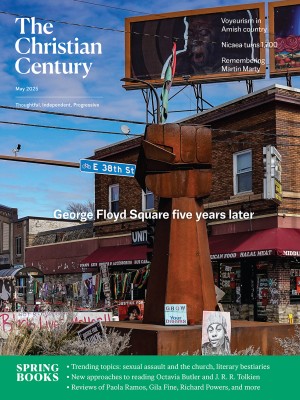Trending topics: Literary bestiaries
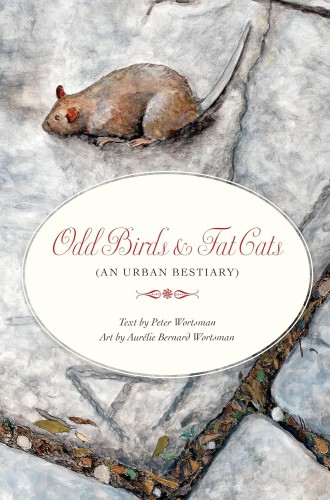
Odd Birds and Fat Cats
(An Urban Bestiary)
Odd Birds and Fat Cats (An Urban Bestiary)
By Peter Wortsman, art by Aurélie Bernard Wortsman
Turtle Point
My introduction to the delightful and expanding world of contemporary bestiaries began with Odd Birds and Fat Cats, a father-daughter exploration of cityscapes and the landscape of the mind. Out of these five bestiaries, Peter Wortsman and Aurélie Bernard Wortsman’s compendium of creatures is perhaps the closest in structure to a 12th-century bestiary, featuring full-color animal renderings and short meditations seemingly inspired by the intersection of survival instinct, mythic metaphors, and the wisdom found in between.
A best-selling genre, the medieval bestiary generally acknowledged something the modern world tends to forget: We are a part of the natural world and it is a part of us, in a mysterious interconnectedness that can be described as spiritual and scientific all at once. Beginning with an exhortation from the book of Job, this bestiary reminds us that our other-than-human kin will speak to us if we have ears to hear. What once was so readily available in the fiction of my childhood—the ability to talk to animals—is now made accessible again through what former Time and PBS NewsHour essayist Roger Rosenblatt calls “a gorgeous example of animal husbandry by two artists who give us learning with joy.”
Read our latest issue or browse back issues.
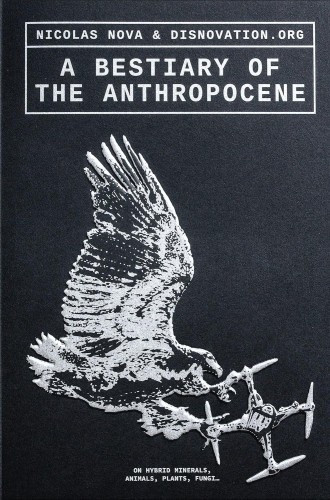
A Bestiary of the Anthropocene
A Bestiary of the AnthropoceneEdited and introduced by Nicolas Nova and Disnovation.org
Onomatopee
Capturing the bizarre yet familiar territory of our “post-natural” world, A Bestiary of the Anthropocene is another compilation similar in layout to a medieval bestiary, but dissimilar in its content: it disrupts the boundaries between our natural and technological systems to create a map of the “dark ecology” that’s arisen in the last century. Designed as a contemporary field handbook, the book’s entries categorize specimens such as “strangled turtles” or “chicken bones,” depicted in black-and-white illustrations akin to pixelated fever dreams.
This bestiary isn’t for the faint of heart, but then again, neither is any truthful glimpse into the changes human beings have wrought in our environmental, social, and technological webs of existence. Based on an art exhibit that commissioned artists, philosophers, anthropologists, and others, this book illuminates the tensions inherent in our drive to innovate. It also seeks to interrogate the relationship between “natural” and “artificial” as biology and technology become increasingly intertwined.
I came away with questions to wrestle with, both as an individual and as a member of communities of faith: Is it helpful for me to interact with technological advances as a part of creation? And in light of that, how might I approach creation care differently? Are there places where crisis can be metabolized into hope?
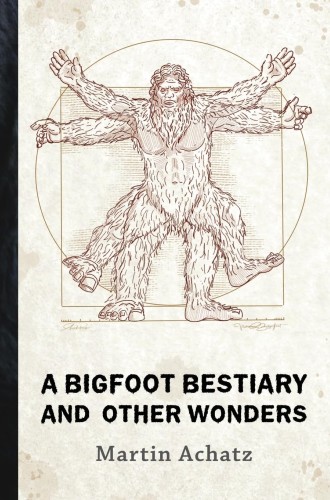
A Bigfoot Bestiary and Other Wonders
A Bigfoot Bestiary and Other Wonders
By Martin Achatz
Modern History Press
Ah, Bigfoot. The fondness I feel for this mythic creature echoes the fondness I feel for all fantastical forest dwellers, including dryads, gnomes, and archetypal crones. That they exist as symbols haunting our imaginations doesn’t make them any less real but only, perhaps, harder to identify when they do manifest in material reality. Martin Achatz aims to “capture” these mysteries in a collection of poems that invite us to reexamine the beasts in our lives as well as surrender to a well of unknowing.
Using playful imagery and deft syntax, Achatz’s tribute to the unknown makes visible the things that might otherwise hide in the dark— our shadow selves and their longings. Of Bigfoot’s New Year’s resolutions, Achatz writes, “he wants to gain weight / stand in the middle of the woods / be mistaken for a landslide,” and even while I chuckled, I felt a small stab of recognition. Here, Bigfoot is allowed to take up space. This bestiary might make room for you to do the same.
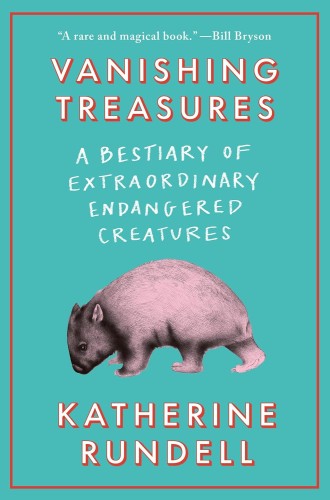
Vanishing Treasures
A Bestiary of Extraordinary Endangered Creatures
Vanishing Treasures: A Bestiary of Extraordinary Endangered Creatures
By Katherine Rundell
Doubleday
Surveying a wide range of endangered animals—from the giraffe to the pangolin to the bat—this lyrical collection of essays is historically informed, deeply engaging, and full of wondrous facts underscoring the sentiment that truth is stranger than fiction. Consider Rebecca, the raccoon who, in 1926, roamed the White House halls as President Calvin Coolidge’s companion; seals who learn to speak English and catcall passersby; and the etymology of the word hedgehog (from the Latin ericius, “a spiky military rod used for defense—or urchins”).
I would be remiss not to mention St. Francis of Assisi when speaking of bestiaries, particularly as Katherine Rundell’s attentive prose and the breadth of wisdom gathered within these pages feel like a blessing. Her invitation to pay close attention to the past, present, and future lives of these “vanishing treasures” encourages us to be in awe of their being and to mourn their loss if we find we cannot chart a new course in the midst of a climate crisis. To stand in wonder is not escapist; it is to inhabit a posture of rootedness and hope in a world we do not want to see disappear.
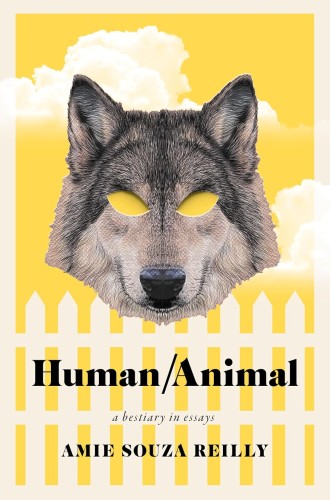
Human/Animal
A Bestiary in Essays
Human/Animal: A Bestiary in Essays
By Amie Souza Reilly
Wilfrid Laurier University Press
Mingling personal narrative with cultural criticism and linguistic inquiry, Human/Animal challenges the notion of animal behavior and interrogates our survival instincts. When she moves into a suburban neighborhood with her new family, Reilly finds herself threatened by neighbors in attempts to intimidate her family into leaving. Written in response to this experience, the subsequent essays are punctuated with Reilly’s own animal sketches, a design choice that gives texture to the human/animal stories as they unfold and serve as a visual reminder of the violated boundaries Reilly interrogates here.
“Boundaries might offer a sense of safety,” Reilly writes, “but they are not harmless. They are, in fact, rooted in harm.” She goes on to describe the settler colonialism that “developed” her town, a reminder that the roots of transgression run deep. Reilly’s work is an ambitious undertaking and begs to be approached slowly, almost as though you should hold out your hand and let it sniff you before you attempt to rub its ears.


